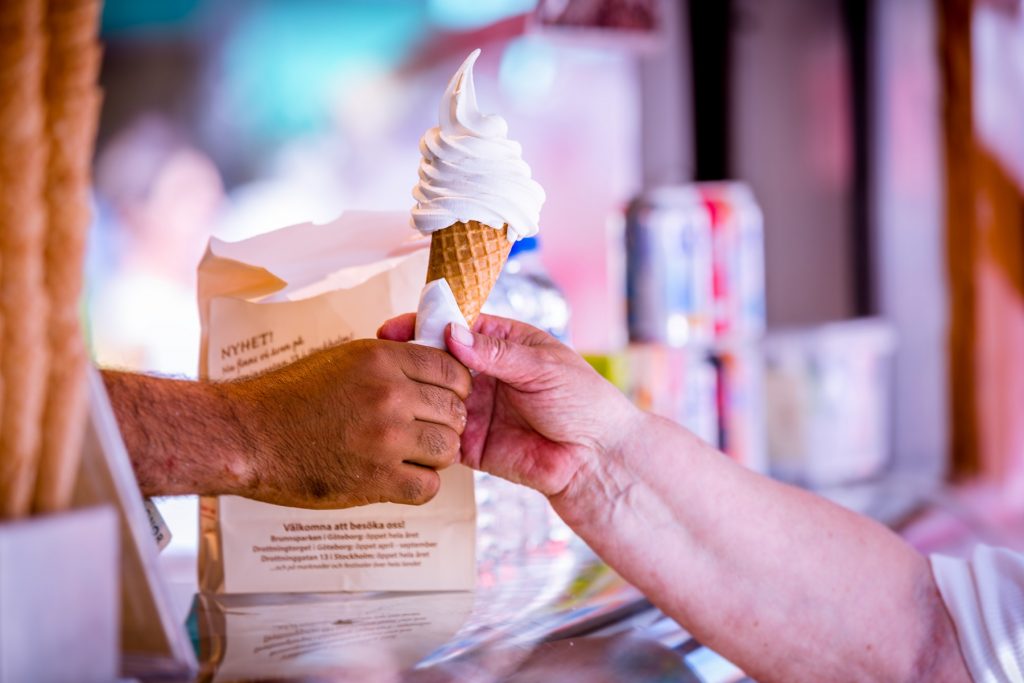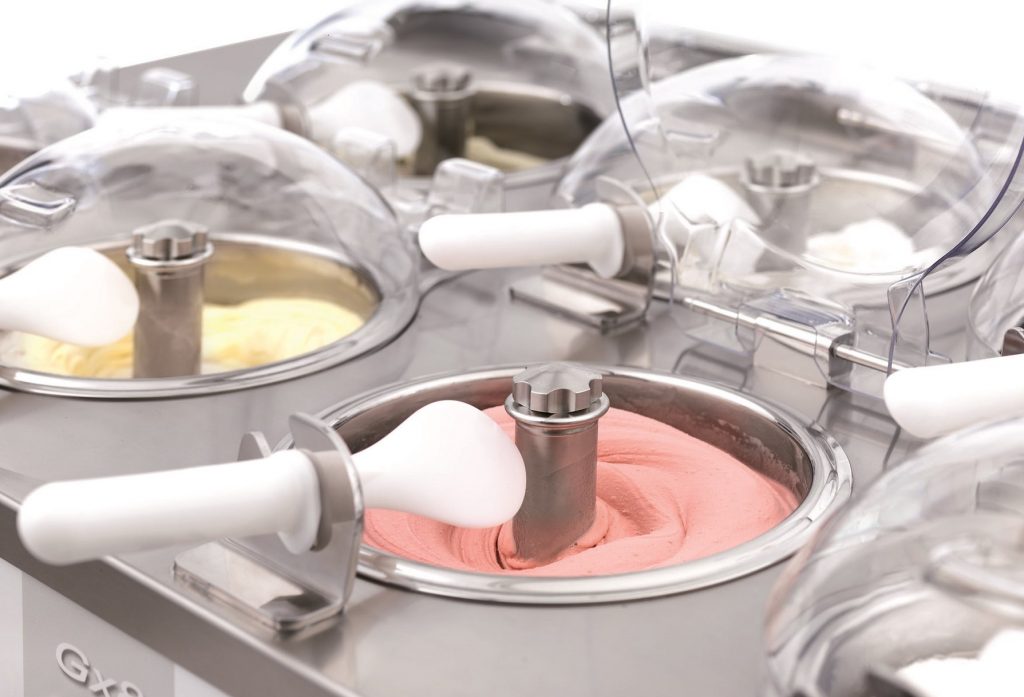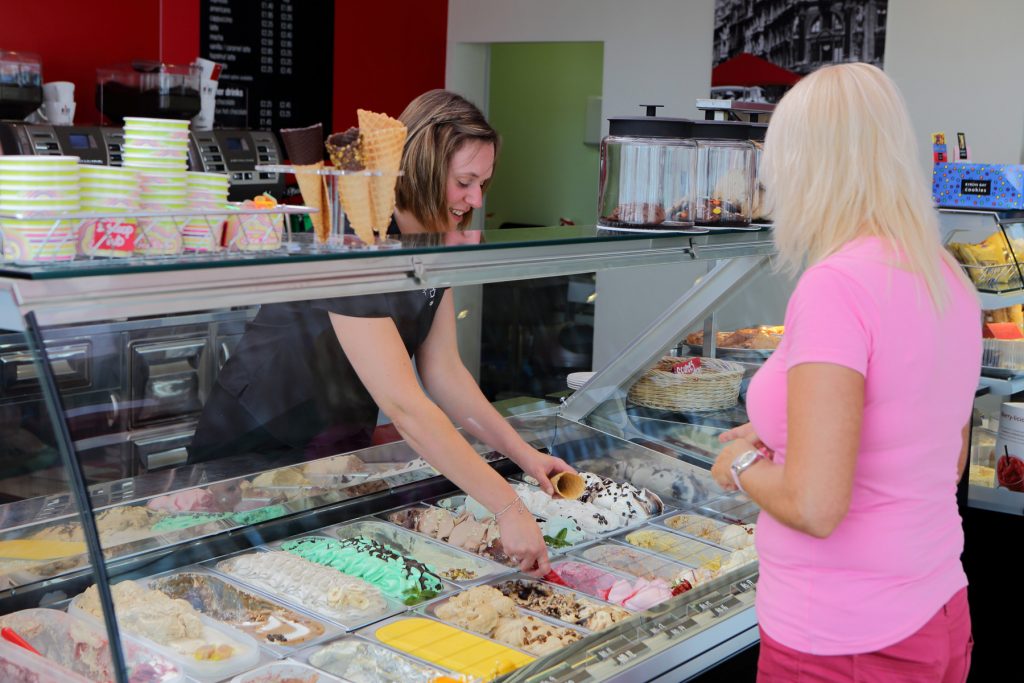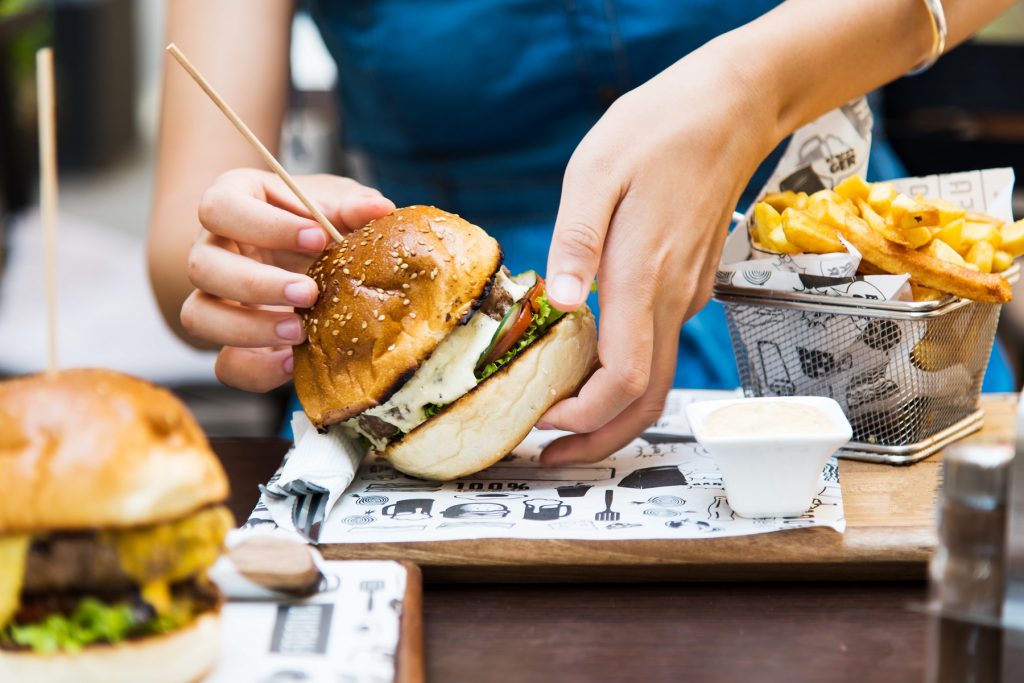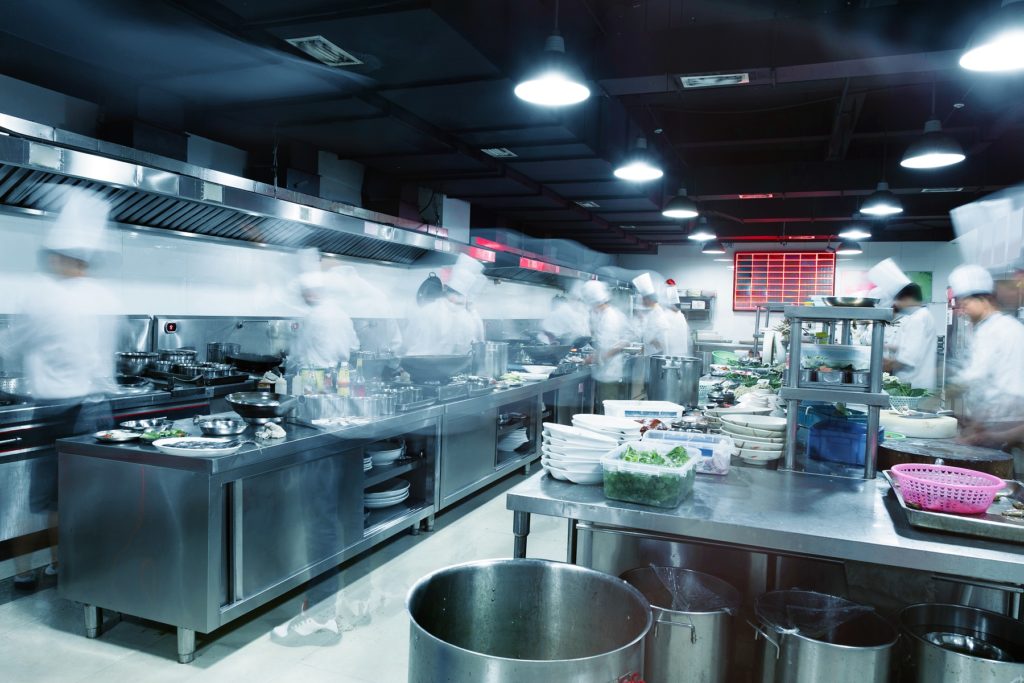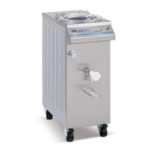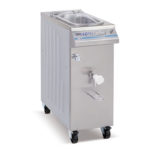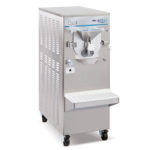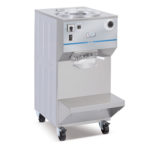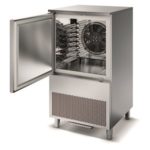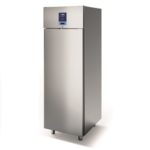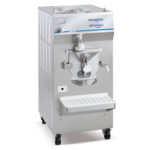Our guide to the best gelato maker and machines
Ice Cream or Gelato? What is the difference?
Gelato’s just Italian ice cream, right? Well, sort of but not really…
The philosophy of using the best possible ingredients and the fewest number of other ‘unnecessary’ ingredients, is what makes Gelato a better, healthier option for both body and soul…
There’s a few technical differences as well…
Air or Overrun Percentage – Commercial ice creams are churned very quickly to whip in plenty of air (called overrun), which is aided by the high proportion of milk proteins in the base mix. High-end ice creams have an overrun of 25% or so, which means they’ve increased in volume by 25%. Cheaper commercial versions can run from 50% to over 90%, which gives them a light, thin, fast-melting texture that isn’t very flavoursome as half of the product is
These differences give gelato a more dense and milky texture that’s less creamy than ice cream. It’s not thin, but it lacks the plush, buttery fullness of its American cousin. Some say that gelato has a more intense flavour than ice cream, since it has less of the tongue-coating cold fat that gets in the way of tasting things. But we think it’s more accurate to say that gelato’s flavours come through direct, hard, and fast, then melt away clean.
Make an Enquiry About Gelato Equipment Today
Gelato making equipment buying guide
This guide will walk you through all of the different pieces of equipment used to make amazing ice creams and gelato, highlighting which pieces are crucial and which are nice to have but not essential in the early stages.
Pasteurisers
To make gelato properly and as safely as possible then you really need to invest in a dedicated pasteuriser to make your base mix.
Pasteurisers come in different sizes, but artisan versions usually come in either 30, 60 or 130 litre sizes. Most are fully automatic in their operation; they heat, mix, hold and chill your mix in the most even, hygienic way possible.
The process is simple; add your milk and cream to the vat and start the pasteurisation cycle. When the milk reaches 40°C add your dry ingredients, the machine will then automatically heat and stir the mix until it reaches the desired pasteurisation temperature. It will then hold it at that temperature for pasteurisation to occur. Once the pasteurisation time has elapsed, it will automatically begin chilling the product back down to 4°C.
There’s two ‘standard’ temperature cycles which are commonly used in the gelato making business either high or low temperature pasteurisation. Low temperature pasteurisation heats the mix to 65°C where it holds it for 30 minutes to allow pasteurisation to occur correctly before chilling it back down. High temperature pasteurisation heats the mix up to 85°C where it holds it for only 15 seconds before chilling it back down.
The times and temperatures are strictly controlled in food hygiene regulations but the most important one is how quickly the machine cools the mix once it’s been heated. Legally the cooling process must be completed within 90 minutes to prevent unnecessary bacterial growth. All commercially available pasteuriser should achieve this… if they don’t something is going wrong!
The temperature which you choose to pasteurise at depends on the ingredients in your mix. Low temperature processes are used when making yellow base which contains egg as the lower temperature protects the egg preventing them from curdling.
Most commercial base mix stabiliser powders prefer to be processed at 85°C to help re-hydration and general product stability. The whole process takes roughly two hours to go from raw ingredients to finished base mix regardless of which cycle you choose. Most pasteurisers will then automatically hold the chilled mix at 4ºC until it’s needed giving the base mix time to age.
Like the batch freezers, it’s important to buy a suitably sized pasteuriser so that you always have sufficient mix on hand to make your gelato. The 60 litre pasteuriser tends to be the most common size for gelato parlours. It makes enough when you’re busy but when you’re quieter you only have to fill it half way.
The process of pasteurisation reduces the levels of bacteria in the mix to below safe levels it doesn’t sterilise it. With that in mind, you need to treat the mix like any open dairy container and use it within 72 hours of making it.
View Our Range of Pasteurisers
Batch Freezers
Assuming that you’re actually going to make your own gelato and not just going to buy in tubs, the next piece of equipment you’re definitely going to need is a batch freezer. Regardless of whether you make a hot mix, cold mix or buy in the mix you’ll need a batch freezer to churn it.
Batch freezers come in a range of styles and capacities, there’s two fundamental types of batch freezer; horizontal and vertical. Vertical batch freezers are an older more traditional style of machine which requires input from the operator at every stage of the process. The newer, horizontal batch freezers work in a more automatic way taking a lot of the thinking and skill away from the operator.
Budget – The vertical batch freezers are more cost-effective size for size in comparison to the horizontal versions. They contain less technology and the ‘thinking’ needs to be done by the operator and can’t be left to the machine.
Capacity – Batch freezers have a typical batch cycle of around 10 minutes and machines range in size from 2Kg per cycle up to 15Kg per cycle. This time is the same regardless of the size of the machine, so it’s important to decide how much of anyone flavour you need to freeze at any one time. If you have a small shop and you only ever freeze one Napoli of each flavour, then having a machine that only freezes one Napoli at a time makes sense. If you have a production kitchen and four shops, it makes more sense to have a bigger machine that can freeze four napolis in the same 10-minute cycle.
It’s important to weigh up machine costs versus staff costs – there’s no point saving a few pounds by buying a smaller machine then paying someone hundreds of pounds to operate it for longer than necessary.
Consistency – Who’s going to be making it? If you’re an owner/operator, then a vertical batch freezer is a good solution for you. The hands-on approach to this equipment makes it the preferred choice for artisans as you need to be part of the process. The machine needs to be told what to do; when to freeze, how long to freeze for and when it need to dispense.
If you’re going to rely on staff members to produce your gelato then the automatic horizontal machines would probably be the better option for you. These machines monitor the freezing process allowing the operator to pour the mix in the top, press the button and forget about it until the unit beeps telling you to remove the product. It takes all of the thinking away from the operator which in turn ensures that a very consistent product is created regardless of the operator. The more ‘thinking’ the machine takes away from the operator, the more expensive the machine ends up being…
View Our Range of Batch Freezers
A blast freezer and a good quality storage freezer…
If you’ve got a queue out the door then dropping your freshly made Napoli of gelato into your display freezer is fine as you’ll sell it in no time! If you’re not fortunate to be that busy, your gelato will benefit from being shock frozen before it goes on display.
When your gelato is dispensed from the batch freezer it is typically only at minus 7°C, it’s frozen but it’s far from solid. This softness is fine if you’re going to sell it quickly, but it will begin to sag if you’re not careful. In a perfect world you’ll have a blast freezer to shock freeze the Napoli solid.
Blast freezers run at temperatures as low as minus 30°C and the extreme cold locks everything in place ensuring that any ice crystals in the product stay tiny ensuring that the product quality is maintained. Once the gelato has been blast frozen, it needs to be covered and transferred to a good quality storage freezer, which is ideally set below minus 25°C where it can be stored for months.
Alternatively it can be placed in you display cabinet where it will last significantly longer than if it was put straight into it.
Remember, display cabinets and regular freezers are not designed to freeze products they’re only designed to store items which are already frozen. They will freeze the product eventually, but they lack the power to do this quickly which can cause the product to sag and ice crystals to form throughout the product as the free water can escape as it’s not frozen cold enough to prevent this.
If you’re planning on transporting your napolis to different locations, the blast freezing process is almost essential to maintain quality and preserve shelf life stability.
Request a FREE One-to-One Demonstration
A nice, but non-essential addition… A tempering cabinet
To preserve the quality of your gelato while it’s in the storage freezer the philosophy of ‘the colder the better’ rings true. This doesn’t help much when you need to put it in your display cabinet as it will be rock solid and take an age to warm up to the ideal serving temperature of minus 14°C. This is where a tempering cabinet comes in…
A tempering cabinet is a second storage freezer but unlike your main freezer this cabinet is set at the same temperature as your display cabinet. This gives you a controlled environment where you can bring deep frozen napolis up to serving temperature before you’re going to actually need it ensuring even thawing maintaining quality.
The tempering cabinet can also be used to store your display napolis overnight to help preserve quality as displays aren’t really designed to store products for long periods of time. You’ll definitely need to turn off your display at least once a week to ensure that it defrosts completely, allowing you to clean it properly. Having a tempering cabinet will give you somewhere to store your half scooped napolis without exposing you gelato to unnecessary extremes of temperature.
The luxury item… a Combination Batch Freezer…
Arguably the ‘Rolls Royce’ of gelato making equipment. A combination machine combines both the heating and freezing cycles into one unit. In theory you can go from raw ingredients to finished gelato in approximately 25 minutes!
The combined process has its advantages; a single machine takes up less space than the split units. It allows you to be a true artisan by allowing you to balance each individual recipe perfectly to make each and every flavour as good as it can be.
There’s a few operational disadvantages as well, firstly time. The heater on a combination freezer is only as big as the barrel below it, this means that you’ll have to weigh out the ingredients for every flavour you make. If you use a separate pasteuriser, you only have to weight out the base mix once and add the flavour. Being able to make a batch in 25 minutes is amazing when you’re really busy and you’ve run out but can prove laborious otherwise.
Lack of ageing is the other disadvantage. There’s zero scope to age your mix in a combination machine so if you’re planning on making and storing your finished napolis for a period of time then a combi machine is not the tool for you.If you’re looking to go down the make it daily route, then ageing isn’t a factor so the combination machine could be what you’re looking for.
In a perfect (money’s no object) world, you would have a pasteuriser and a combination machine. This would give you the greatest production flexibility; a vat of base mix for your standard flavours like vanilla, strawberry and bubble gum and the heater on the combi can be used for the ‘speciality flavours’ like the nuts and chocolates as these do benefit from being heated to bring out the flavours into the mix.
View Our Range of Combination Freezers

